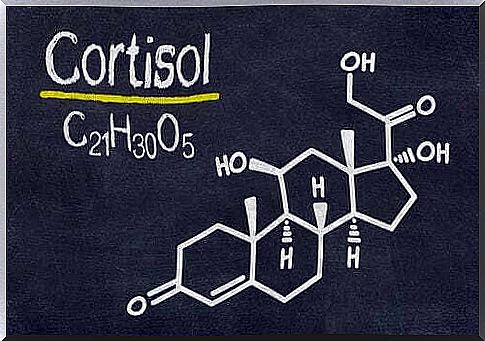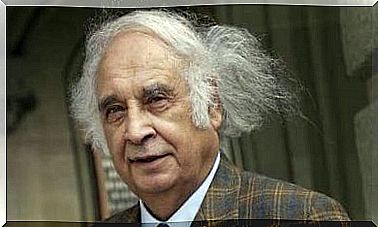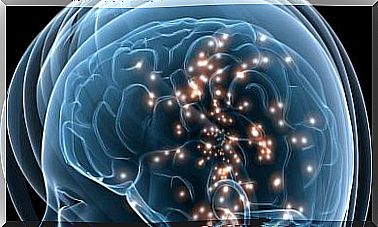The Neurobiology Of Trauma

Child abuse is now considered a serious public health problem. The effects of exposure to traumatic experiences on the psychopathology of children have been studied in recent decades. How does the neurobiology of trauma develop?
In recent years, clinical research has focused on explaining the impact of one-off traumatic events and exposure to chronic abuse and neglect. Several studies have shown that isolated trauma tends to produce conditioned responses to memories.
On the other hand, chronic abuse or recurrent exposure to traumatic events, such as repeated medical or surgical procedures, appear to have widespread effects on neurobiological development. Several elements seem to contribute to the extent of the psychological damage caused by the trauma:
- The age at which the person first experiences the trauma.
- The frequency of traumatic experiences.
- The degree to which the parents or guardians contribute to the traumatic event.
We therefore know that traumatic experiences can change brain structures and compromise emotional, cognitive and bodily functions, thus weakening the subject. Nonetheless, the neurobiology of trauma is still poorly understood among specialists and available educational resources are scarce.
In 2013, the American Psychiatric Association revised the diagnostic criteria for post-traumatic stress disorder (PTSD) in the Diagnostic Manual for Mental Disorders . The disorder was therefore included in a new category in the manual, namely trauma-related disorders and stressors.

Post-traumatic stress disorder
Traumatic events can impair emotional, cognitive and bodily functions. This causes debilitating symptoms for the person and leads to a diagnosis of PTSD. Trauma can occur:
- During a specific event. For example, when witnessing gender-based violence.
- For an extended period. As in the case of child abuse.
In the presence of intense stress, the hippocampus (involved in processing memory) and the amygdala (involved in processing emotions) are flooded with stress hormones. The individual fails to process the traumatic experience as an accomplished event (even if the threat as such no longer exists) and the memory remains active in the brain.
For this reason, the symptoms of PTSD can appear long after the trauma has occurred. In 25% of cases, a late onset of symptoms is observed.
The neurobiology of trauma: affected areas
Trauma-induced neurobiological abnormalities include areas involved in the regulation of homeostasis. These are:
- Brain stem and locus coeruleus.
- Memory systems (including hippocampus, amygdala and frontal cortex).
- Brain areas involved in executive functioning, i.e. orbitofrontal cortex, cingulate cortex, dorsolateral prefrontal cortex.
- Neuroendocrine system, including the hypothalamic-pituitary-adrenal (HPA) axis, all neurotransmitter systems.
Brain stem and midbrain
The systems dealing with dealing with threats are the sympathetic and parasympathetic nervous systems, which originate in the brain stem. Early exposure to extreme threats and inadequate long-term care affects the body’s ability to modulate the sympathetic and parasympathetic nervous systems in response to stress.
Catecholamines
Some studies report that children with post-traumatic stress disorder have higher concentrations of dopamine and norepinephrine than those who have not been abused.
Heart rate variability
Children who have suffered trauma have less heart rate variability than healthy individuals.
Cortisol
In general (and in contrast to cortisol studies in adults with PTSD), traumatized children show significantly higher cortisol levels than control groups who had not experienced prior trauma.

Limbic system
Science reports that adults who have undergone trauma and suffering from PTSD show greater activation of the right amygdala when they remember the trauma. This activation is accompanied by less activation of the speech center.
The neurobiology of trauma: the hippocampus
People who have suffered trauma and developed PTSD may have a smaller volume of the hippocampus. Davidson and his colleagues say that the hippocampus’ involvement in psychopathology is most evident in the processing of emotional information.
Children with hippocampal damage would be prone to exhibit emotional behavior in inappropriate contexts. The other areas affected by the trauma are:
- Prefrontal cortex.
- Hemispheric lateralization.
- The cerebellum, the corpus callosum and the integration of experiences.
Long-term effects on the neurobiology of trauma
Loss of emotional self-regulation
Lack of emotional self-regulation is characteristic of children who have suffered chronic trauma. In turn, it hinders an adequate development of the self-concept. This is reflected in:
- The lack of a continuous and predictable sense of self, with impatience with separation and an altered body image;
- Poor modulated affect, as well as poor impulse control, including aggression against oneself and others;
- Uncertainty about the reliability and predictability of others, which can lead to distrust and privacy issues.
Learning and memory
Some characteristics of traumatized children are:
- Tendency to excessive control. They worry about imminent danger and tend to lash out at ambiguous stimuli. This affects their perception of the world and is often associated with the development of generalized learning and academic achievement problems
- Limited attention to sources of threat. They show disinterest in response to stimuli that other children might find interesting. The appearance of paranoid ideas and misperceptions may also occur.
The neurobiology of trauma: social problems
Generally, children who have been exposed to violence are unlikely to adapt their arousal to appropriate social demands.
As a result, they often find themselves out of tune with others. This could suggest a cognitive disability during the elementary school years.

Physical illness
Other studies have shown that traumatized children are more vulnerable to a variety of physical illnesses. As adults they have a 10-15% higher risk of developing cancer, heart disease and diabetes.
During adolescence they tend to carry out destructive acts against themselves and against others. Additionally, they are about 300% more likely than their non-traumatized peers to be involved in drug abuse, self-harm, and violent and aggressive behavior against others.
Many children affected by trauma tend to communicate what has happened without using words, but rather viewing the world as a place fraught with danger and activating. This causes them to activate survival-oriented neurobiological systems, even when they are objectively safe.
As long as the child is unable to talk about the traumatic experiences experienced, the trauma will likely be expressed as the embodiment of what happened.
The purpose of therapy is to help the patient develop a sense of physical mastery, in turn stimulating an awareness of who he is and what has happened to him. In this way he will be able to understand what is happening in the present and stop recreating the traumatic past in an emotional, behavioral and biological way.









